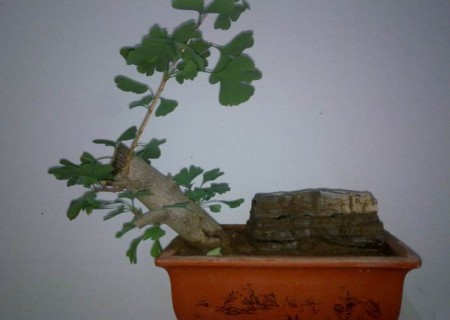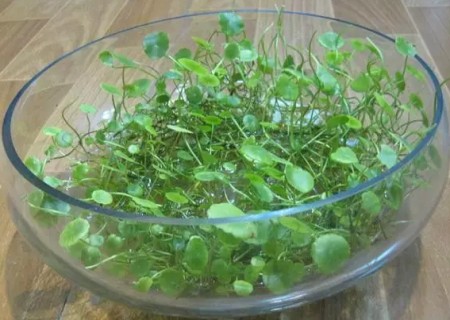Seedling raising technique of twig grafting of Ginkgo biloba
Ginkgo biloba is a very ancient tree species with a history of hundreds of millions of years. Ginkgo biloba has high garden value, economic and medicinal value. Ginkgo biloba is widely planted at present, and the market supply of ginkgo seedlings is amazing every year. So how does Ginkgo biloba propagate artificially? This paper introduces a method commonly used in the seedling raising technology of Ginkgo biloba-tender branch grafting.

The grafting time of Ginkgo biloba is generally between June and September, but the grafting effect in August is the best, because the twigs are stout and full, the nutrients in the branches are also rich, the interface heals quickly and the survival rate is higher. Grafting should be carried out at low temperature in cloudy and sunny days, but not at noon in rainy and hot weather, otherwise it will affect survival.
I. preparation before grafting
1. Selection of scion
The new spike with full bud body should be cut from the middle and upper part of the crown of the improved parent tree. Remove the leaves from the ear strips, tie them into small handfuls, and moisturize the base with a wet cloth.
The scion should be collected from the improved variety harvest nursery or excellent mother tree, and the new spike with full bud should be cut from the middle and upper part of the outer crown of the mother tree. Cut off the leaves of the ear strips, keep the petiole, align the base, tie it into a small handle, and moisturize the base with a wet cloth. Scions should be picked up as soon as they are picked, and those that can not be picked up on the same day should be stored in the refrigerator or in a cool and ventilated place.
2. Selection of rootstocks
Requirements for grafted rootstocks: 2-3-year-old seedlings or cuttings with strong growth, straight stem, strong stress resistance and highly suitable.
2 ~ 3-year-old seedlings, cuttings and root tillers can be used as rootstocks. The selected rootstocks should have strong growth, straight seedling stem, strong stress resistance and high suitability. The height of rootstock varies according to the cultivation goal: for early fruit dense planting, the position is about 1.0m, and the seedling height is about 1.5m; for garden planting, the position is 1.5m, and the seedling height is 2.0-2.5m; for road greening, the grafting position is about 2.5m, and the seedling height is about 3m.
Second, grafting time
It can be from June to September, but the effect of grafting in August is the best, when the twigs are stout and full, the nutrients are rich, the interface heals quickly and the survival rate is higher. Grafting should be carried out at low temperature in cloudy and sunny days, but not at noon in rainy and hot weather, otherwise it will affect survival.
3. Operation methods of twig grafting of Ginkgo biloba.
1. Ear cutting: cut a section with 2-3 buds on the spike as a scion, cut a 2-3cm wedge-shaped cutting surface from each side of the lower end bud, and cut it into a flat mouth at the 0.5cm above the end bud on the scion.
2. Cutting stock: cut and cut flat on the joint of the rootstock and split longitudinally in the middle of the cross section, the depth is equal to the length of the cutting surface of the scion.
3. Binding: insert the cutting surface of the scion into the split of the rootstock, align the two cambium at least on one side, and then tie the interface with plastic film tape.
IV. Maintenance and management after grafting:
Half a month after grafting, check whether to survive, the way to judge whether to survive is to touch the petiole, if it falls immediately, it means that it has survived, otherwise it has not survived. Release the bandage after the interface is fully healed. Usually pay attention to often erase rootstock sprouting, strengthen fertilizer and water management, timely prevention and control of diseases and insect pests, in order to promote the growth of grafted plants.
As the twigs have not yet been completely Lignified, it is appropriate to use a thinner plastic film when grafting and binding, and not too tight, so as not to damage the scion and affect the survival. Twig grafting can also be used for high grafting and replacement, and subcutaneous grafting can also be used for shoots with a high degree of Lignification.
Grafting propagation is the main propagation method in the cultivation of Ginkgo biloba, which can bear fruit earlier and make the plant dwarf, fullness and high yield. Grafting is usually carried out by means of subcutaneous branch grafting, peeling grafting or cutting grafting from mid-March to early April in spring. Scions are mostly selected from 20-30-year-old plants with strong growth and exuberant fruit. Generally, about 4 short branches on 3 ~ 4-year-old branches are selected as scions, and each plant is usually grafted with 3 ~ 5 branches. The fruit began to bear fruit from 5 to 8 years after grafting.
Time: 2019-06-09 Click:
- Prev

Grafting technique of Ginkgo biloba potted plant
Ginkgo is a long-lived tree, not only slow growth rate, and flowering and fruiting very late, Ginkgo seedlings generally after 20 to 30 years of growth before flowering and fruiting, and low yield, poor quality. However, if grafting technique is adopted, it can blossom and bear fruit in 23 years. Grafting not only produces fruit earlier,
- Next

The steps of hydroponic culture of Rabdosia angustifolia
Artemisia angustifolia is a creeping, water-repellent aquatic herb with round leaves and green oil. The method of hydroponic cultivation of Tongqian grass is relatively a way loved by lazy people. In recent years, hydroponic culture has become very popular. Among hydroponic plants, Codonopsis lanceolata can be said to be at the top. Because of its simple and close to the people.
Related
- Fuxing push coffee new agricultural production and marketing class: lack of small-scale processing plants
- Jujube rice field leisure farm deep ploughing Yilan for five years to create a space for organic food and play
- Nongyu Farm-A trial of organic papaya for brave women with advanced technology
- Four points for attention in the prevention and control of diseases and insect pests of edible fungi
- How to add nutrient solution to Edible Fungi
- Is there any good way to control edible fungus mites?
- Open Inoculation Technology of Edible Fungi
- Is there any clever way to use fertilizer for edible fungus in winter?
- What agents are used to kill the pathogens of edible fungi in the mushroom shed?
- Rapid drying of Edible Fungi

